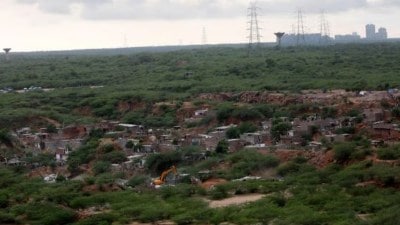Basmati cultivation: Punjab halfway through, has 15 days to meet target
While Barnala, Kapurthala, and Faridkot sow paddy in over a lakh hectares, the remaining districts recorded paddy sowing below one lakh hectares.
 Basmati, an aromatic variety of rice, is valued for its lesser water consumption compared to water intensive paddy. (File)
Basmati, an aromatic variety of rice, is valued for its lesser water consumption compared to water intensive paddy. (File)Punjab has so far reached a little over 50% of its target of basmati cultivation this year. While the state had set an ambitious target of growing basmati on 10 lakh hectares, it has till July 16 this year been able to cultivate only 5.16 lakh hectares under the aromatic rice variety.
Last year the agrarian state had set a target of 6 lakh hectares under basmati and cultivated 5.96 lakh hectares. Overwhelmed with the success, the state had this year increased the target by 40%.
Officials from the Punjab agriculture department have indicated that Basmati sowing will continue till the end of this month and they are hopeful that they will be able to meet the year’s target.
Basmati, an aromatic variety of rice, is valued for its lesser water consumption compared to water intensive paddy. It is sown around a month later and benefits from the monsoon rains. This makes it a crucial crop for conserving water resources in Punjab, where the extensive paddy cultivation has strained groundwater levels. Basmati is considered the best alternative for paddy in the state, prompting the authorities to increase the target area of the crop.
Punjab has till date sown 28.83 lakh hectares of paddy, including 5.16 lakh hectares of basmati, this year.
About 22.78 lakh hectares were sown through puddled transplanting rice and 88,851 hectares through direct-seeded rice (DSR) techniques.
DSR too is way below the target as around 7 lakh acres (2.83 lakh hectares) was to be sown through DSR, which also saves 15 to 20% water. Punjab anticipates surpassing last year’s 31.87 lakh hectares under paddy this year.
Experts, however, recommend limiting paddy cultivation to 20-21 lakh hectares, including 10-11 lakh hectares under paddy (non-Basmati) and remaining under Basmati to protect groundwater resources.
Experts believe that this year even if the Basmati area falls short of the 10 lakh-hectare target, achieving 6 to 7 lakh hectares would still be a commendable outcome, given Punjab’s increasing paddy acreage. However, to meet the 10 lakh-hectare goal for Basmati, Punjab would need to restrict paddy cultivation to around 20 lakh hectares in the current trend when the area under paddy is exceeding 31 lakh hectares for the past 4-5 years.
54 lakh hectares, Gurdaspur 1.51 lakh hectares, Moga 1.44 lakh hectares, Tarn Taran 1.25 lakh hectares, Mansa 1.19 lakh hectares. While Barnala, Kapurthala, and Faridkot sow paddy in over a lakh hectares, the remaining districts recorded paddy sowing below one lakh hectares.
As Punjab continues its agricultural endeavors, balancing Basmati and paddy cultivation remains crucial for sustainable water management and agricultural productivity in the region, said an agriculture department officer.







